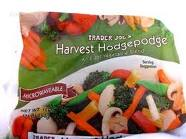Cheap healthy eats
Are all healthy foods expensive? Absolutely not! Some of the healthiest picks are resonably priced. Fill your shopping cart with more for less:
Canned Fish: Canned fish, such as water-packed tuna and salmon, is an excellent source of lean protein, and is vitamin and mineral-rich. All seafood, including canned fish, contains a dose of heart-healthy omega-3 fatty acids.
Beans: Consumer Reports recommends choosing beans, either canned or dried, as a staple for tight food budgets. Beans are inexpensive, versatile, and a great source of lean protein, carbohydrates and dietary fiber. Add them to soups, pasta dishes, salads and chili to increase bulk. Canned beans are the easiest and most convenient to use but, in general, dried beans are the most economical.
Rolled Oats: Oats are a nutrient-rich whole grain. For the best value, buy the large, cylindrical-shaped container of old-fashioned rolled oats. Oatmeal make for a hearty, carbohydrate-, protein- and fiber-rich hot breakfast or afternoon snack. Use them as an ingredient in meatloaf, cookies, pancakes and muffins. Oats, on their own, contain no artificial ingredients or sugars, just 100 percent whole-grain rolled oats.
Potatoes: Save money by purchasing potatoes by the bag instead of by the spud. With the right add-ons, potatoes can make a satisfying entree. Use them as a healthful base for creative toppings such as unflavored yogurt, cottage cheese, black beans, salsa and reduced-fat cheese. Sweet potatoes are a bit more expensive but offer even more nutrients. All potatoes are rich in vitamin C, potassium and dietary fiber.
Powdered or Evaporated Milk: Powdered milk stretches further than fluid, and skimmed evaporated (canned) milk is less costly than fresh milk. These are economical, nutrient-rich substitutes for fluid milk, especially for use in recipes, such as soups, casseroles, mashed potatoes and/or dessert recipes. Save your fresh milk for drinking or adding to your coffee or cereal.
Eggs: Eggs are an inexpensive source of high-quality protein. They are versatile and make for a quick meal any time of the day. Prepare them in a variety of ways. The protein and fat in eggs helps keep you feeling fuller for longer, so you are less likely to overdo it at the next meal. Use them to make a healthy meatless dinner, such as a veggie-filled omelet.
Apples: Much like potatoes, purchasing apples by the bag is more economical than buying larger apples by the pound. Apples are known to be nutritious. One medium-sized fruit meets roughly 15 percent of your recommended daily intake of dietary fiber. Apples are also a good source of vitamin C.
Frozen Vegetables: According to the Cleveland Clinic, as long as you avoid the fancy blends with rich sauces and shop generic or off-brand, frozen vegetables are a budget-friendly health food. Vegetables are frozen at the peak of freshness and retain their nutrients well. Select from colorful vitamin-rich choices, such as carrots, broccoli and green beans.
Peanut Butter: Peanut butter is high in protein and heart-healthy unsaturated fats. A little of this kid-friendly food goes a long way. A 2 tbsp. serving meets over 10 percent of the recommended daily value, or DV, for many nutrients, such as vitamin E, vitamin B-3, magnesium, phosphorus and manganese.
Brown Rice: This nutritious whole-grain food is a budget buy, as long as you avoid fancy boxed mixes and instant varieties. Buy plain, long-grain bagged or boxed brown rice. In addition to providing energizing carbohydrates, cooked brown rice is packed with nutrients, such as niacin and vitamin B-6, magnesium, copper, manganese, selenium and dietary fiber.








